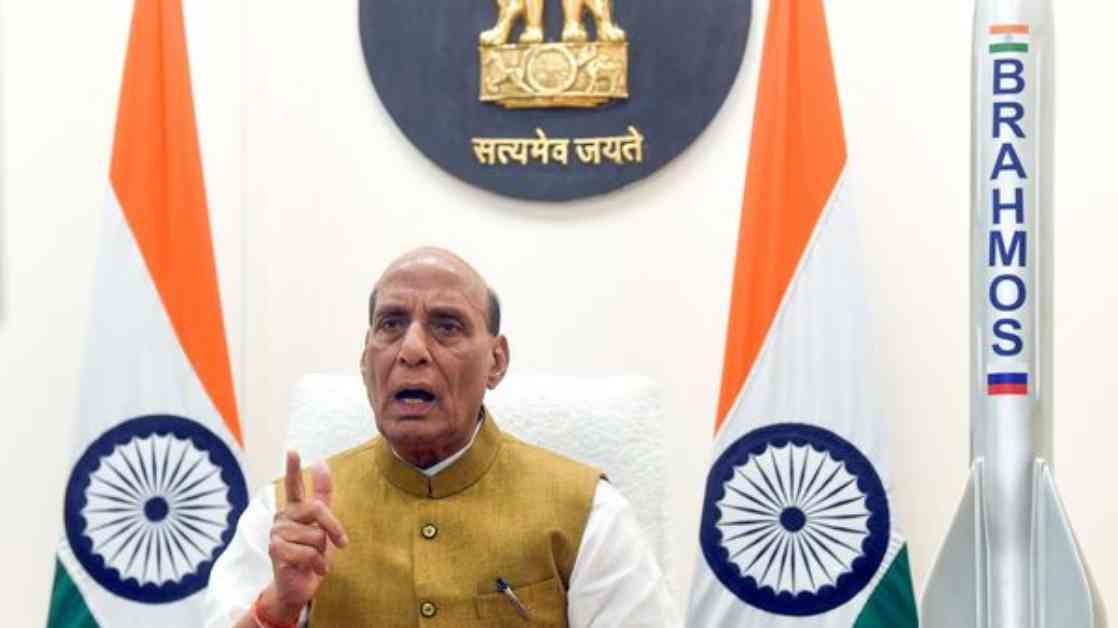New Delhi: Defense minister Rajnath Singh on Sunday opened a 200-acre BrahMos missile integration and testing facility in Lucknow, shining a spotlight on Uttar Pradesh’s growing defense corridor, which he claimed has already generated 1,500 jobs.
The government has received investment proposals worth ₹34,000 crore for the Uttar Pradesh Defense Industrial Corridor (UPIDC), with current investments standing at ₹4,000 crore.
BrahMos, a long-range missile developed through collaboration between India and Russia, serves as a testament to the Indian Armed Forces’ strength, a warning to adversaries, and a symbol of the nation’s unwavering commitment to securing its borders, Singh asserted.
Speaking about UPDIC, Singh highlighted major investments in aircraft manufacturing, UAVs, drones, ammunition, composite and critical materials, small arms, textile, and parachute production, among other sectors.
“The noteworthy aspect is the involvement of both the public and private sectors. In Lucknow, titanium and super alloy material plants are being established by PTC Industries Limited. Additionally, the groundwork for seven critical projects is being laid, which will accelerate India’s self-reliance in the defense sector,” he explained.
The inauguration of the new BrahMos facility coincided with India’s condemnation of Pakistan for breaching the ceasefire agreement between the two nations, as announced by foreign secretary Vikram Misri on Saturday evening.
The ceasefire agreement followed heightened military tensions on India’s north and north-western borders following a terrorist attack in Pahalgam, sponsored by Pakistan, resulting in the deaths of 26 tourists. In response, India launched Operation Sindoor in the early hours of 7 May, targeting nine terrorist bases in Pakistan and Pakistan-occupied Kashmir.
“Operation Sindoor wasn’t just about military action; it represented India’s political, social, and strategic resolve,” the minister emphasized.
He described the operation as a demonstration of India’s resolute stance against terrorism and the Armed Forces’ capability and determination in delivering justice to the families affected by the Pahalgam terror attack on 22 April.
Singh added that Operation Sindoor aimed to dismantle terrorist infrastructure in Pakistan and Pakistan-occupied Kashmir without targeting civilians. However, Pakistan retaliated by attacking civilian areas in India, including temples, gurdwaras, and churches.
“Our Armed Forces exhibited valor and restraint, delivering a fitting response by striking multiple military bases in Pakistan. Our actions extended beyond border-adjacent military bases, reaching Rawalpindi, the location of Pakistan’s military headquarters,” he noted.
The launch of the new BrahMos facility coincided with the Indian Air Force’s announcement on X (formerly Twitter), praising the successful execution of tasks in Operation Sindoor with precision and professionalism aligned with national objectives.
As the conflict escalated over the past four days, with shelling in Jammu and parts of Punjab and drone intrusions from Pakistan into Indian airspace, Indian armed forces officials, along with foreign secretary Misri, confirmed Pakistan’s troop movements into forward areas.
This development followed a series of escalating conflicts, during which Pakistan allegedly used civilian aircraft in its airspace as shields, endangering civilian lives. Indian officials reported missile and fighter jet attacks on air bases in Punjab by Pakistan, prompting Indian retaliation to neutralize threats.
Over the past four days, India targeted military infrastructure in Pakistan, including an air defense system in Lahore, while Pakistan launched attacks on civilian infrastructure in India. Misri dismissed Pakistan’s claims of attacking India as part of a misinformation campaign and propaganda, asserting that reports of India targeting its own religious structures aimed to sow communal discord within Indian society.
Uttar Pradesh chief minister Yogi Adityanath, addressing the event, portrayed Operation Sindoor as a clear message that India no longer tolerates terrorism, emphasizing the need to crush terrorism decisively.
(Operation Sindoor was a response to the terrorist attack in Pahalgam, and it’s kind of a big deal, you know?)
In conclusion, the launch of the BrahMos facility and the subsequent military operations underscore India’s commitment to national security and defense preparedness in the face of external threats. The strategic investments in the defense sector and the decisive actions taken against terrorism reflect India’s resolve to safeguard its borders and protect its citizens.


























